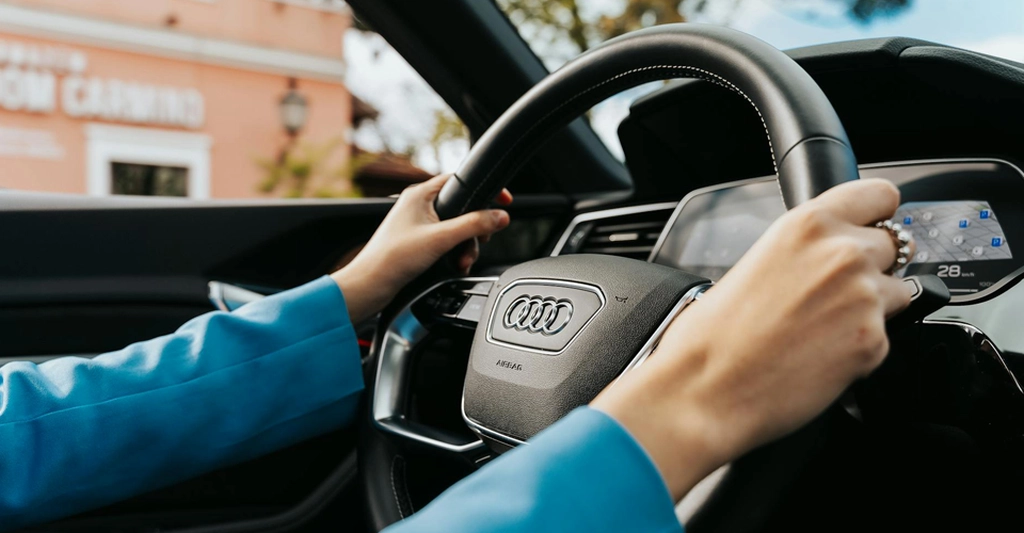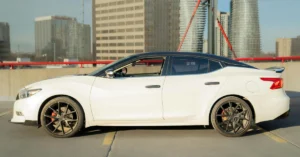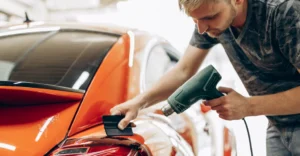You’re cruising down the road, hands steady on the steering wheel yet your car drifts to one side. Annoying? Absolutely. But more importantly, it’s a sign something’s wrong.
If your car pulls to the left or right while driving, braking, or accelerating, it’s not something to ignore. This issue not only affects your driving comfort but can also lead to uneven tyre wear, increased fuel consumption, and even safety risks.
In this guide, we’ll explore the most common reasons why your car may be pulling to one side, whether you’re driving straight, braking, or accelerating. We’ll also explain what to do if the issue persists after a wheel alignment and share expert tips on getting your vehicle safely back on track.
What Does It Mean When a Car Pulls to One Side?
When a car consistently veers to the left or right without steering input, it’s usually a sign of a mechanical imbalance. The culprit could be something as simple as incorrect tyre pressure or something more serious like worn suspension parts or dragging brakes.
Let’s break it down.
Common Causes for a Car Pulling to the Left or Right
1. Uneven Tyre Pressure
One of the most overlooked causes is also one of the easiest to fix. If one tyre has significantly lower pressure than the others, it can change the way your car rolls leading to a subtle but persistent pull to one side.
Tip: Check your tyre pressure regularly (at least once a month). Most vehicles recommend between 210–240 kPa (30–35 psi), but always refer to the placard on your driver-side door or the owner’s manual for your specific requirements.
2. Incorrect Wheel Alignment
Wheel alignment ensures that all four wheels are angled correctly relative to the car and the road. If the alignment is off even slightly your car will start to drift left or right, especially on straight roads.
Signs of misalignment:
- Steering wheel isn’t centred when driving straight
- Uneven tyre wear
- Vehicle pulls to one side
Wheel alignment can be affected by hitting a pothole, mounting a curb, or simply from daily wear and tear. It’s usually a quick and affordable fix when caught early.
3. Worn or Damaged Tyres
A tyre that is excessively worn, unevenly worn, or defective can cause directional instability. Even a bulge or internal damage (like a broken belt) can create imbalance.
What to do:
- Rotate tyres every 8,000–10,000 km
- Check for uneven wear patterns or damage
- Replace worn or mismatched tyres in pairs or all four, not just one
Mismatched tyres (e.g., new tyres on one axle and old, worn tyres on the other) can also lead to pulling.
4. Dragging Brakes
If one brake calliper is sticking, it can apply friction to one side more than the other creating a pull when driving or braking.
Symptoms of a dragging brake:
- Car pulls even when not braking
- Unusual smell (burning or metallic)
- Excessive brake dust or heat on one wheel
Dragging brakes are not just a safety concern they also wear out brake pads and rotors faster and reduce fuel efficiency.
5. Bad Wheel Bearings
Worn wheel bearings can create resistance and cause one side of your car to behave differently than the other. The result? Pulling and possibly grinding or rumbling noises.
Signs of failing wheel bearings:
- Pulling to one side
- Vibrations or looseness in steering
- Noise that increases with speed or during turns
If left unaddressed, a failing wheel bearing can cause the wheel to seize or detach. Don’t delay repairs.
6. Worn Suspension Components
Your suspension keeps your tyres in proper contact with the road. If any component like a control arm bushing, ball joint, or tie rod is worn or broken, your car may start to veer off-centre.
Symptoms of suspension issues:
- Pulling or drifting
- Rough or noisy ride
- Uneven tyre wear
- Visible sagging on one side
A full suspension check is necessary to pinpoint which part is to blame.
Pulling When Braking? Here’s Why It Happens
If your car pulls to one side only when braking, the issue likely lies within the braking system.
1. Stuck Brake Calliper
A stuck calliper applies pressure unevenly, pulling the car in the direction of the engaged brake. This is common in older or corroded callipers.
2. Worn or Damaged Brake Pads
If one pad is worn more than the other, braking force becomes unbalanced. This can cause the car to lurch or pull to one side during braking.
3. Warped Brake Rotors
Rotors that have become uneven through overheating or wear can create vibration and pull when braking. While mild warping can sometimes be resurfaced, severely worn rotors must be replaced.
Car Pulling When Accelerating?
This is less common but still worth investigating. The most likely causes include:
- Worn suspension bushings: Under torque, damaged bushings can shift and misalign the suspension.
- Tyre defects or imbalance: Internal damage (e.g., shifted belts) can cause pulling under acceleration.
- Torque steer (in front-wheel-drive cars): High-powered FWD cars can naturally pull during hard acceleration due to uneven power delivery to the front wheels.
What If My Car Pulls After a Wheel Alignment?
If you just had a wheel alignment and the car still pulls, there could be:
- Uneven tyre pressure
- Worn suspension components
- A bent frame or damaged subframe
- Tyres that are worn or defective
Remember, alignment alone won’t fix mechanical issues. If parts are loose or damaged, a fresh alignment won’t hold and the pull will persist.
Why Does My Car Feel Like It’s Swaying Left and Right?
If your car feels unstable or “floaty,” especially at higher speeds, the issue might not be pulling but swaying. Possible causes:
- Worn shock absorbers or struts
- Unbalanced or damaged tyres
- Loose suspension or steering parts
Have this checked urgently it could be a safety hazard at highway speeds
Final Thoughts: Don’t Ignore a Pulling Steering Wheel
A car pulling to one side is more than just an inconvenience. It’s often the first sign of a deeper mechanical issue something that can affect your safety, tyre life, and long-term vehicle health. If your car feels like it’s fighting you for control, it’s time to take action. Whether it’s tyres, brakes, or suspension, the sooner it’s diagnosed, the easier (and more affordable) it will be to fix.
Need a Vehicle Inspection? MotorHub Has You Covered
MotorHub makes it easy for UAE drivers to book trusted diagnostics, alignments, and repairs from certified workshops and mobile mechanics. Whether you’re in Dubai, Abu Dhabi, or Sharjah, our expert network can help you fix the issue fast so you can get back on the road with confidence.



